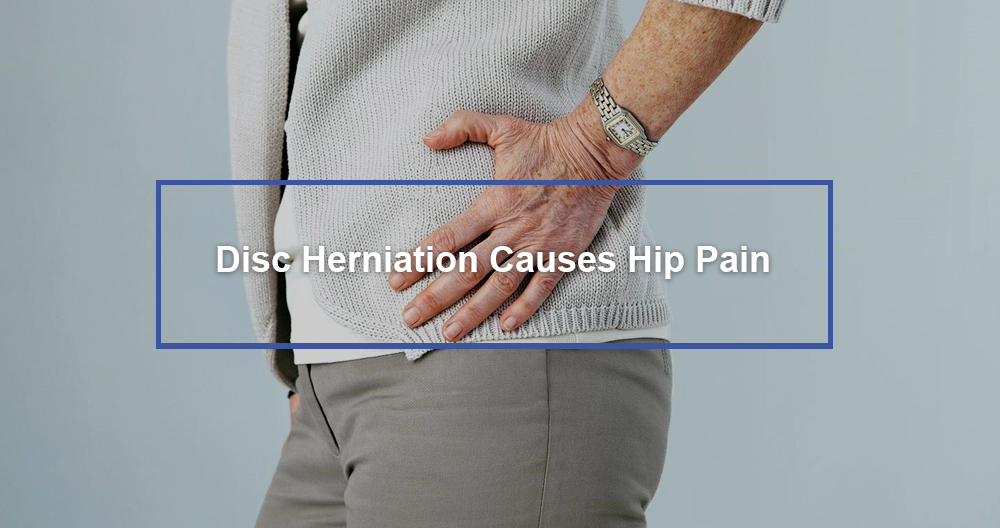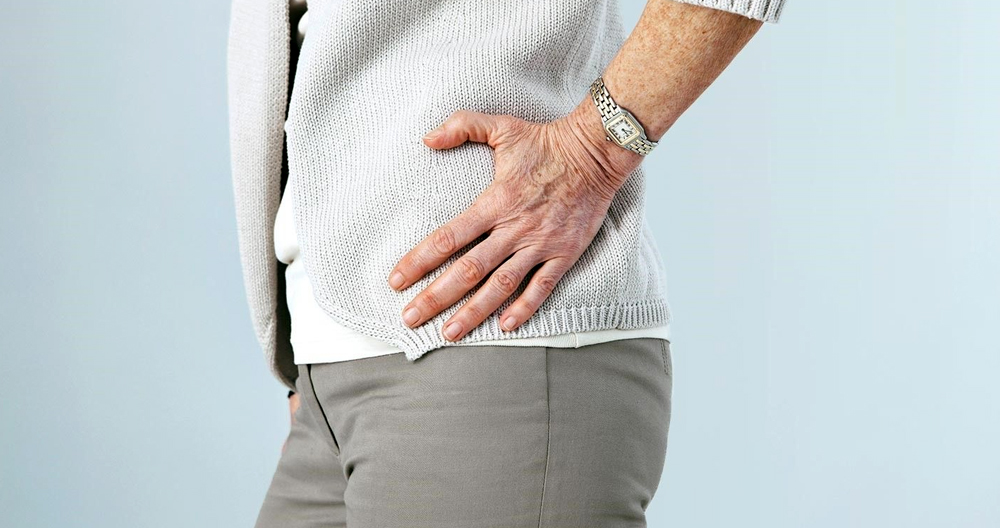
Hip pain is often a problem that people seek out help from their doctor. Sometimes people attempt to heal it. People are convinced that there is something wrong with the hip, and so they begin to seek treatment. One thing is certain, hip pain does not always appear as it should. Hip pain may be due to a problem within the hip joint. Hip pain can also be caused due to a problem with the hip joint itself or soft tissue issues around the area.
The first step in restoring your active lifestyle and activities is to obtain a correct diagnosis. Let’s look at the causes and possible treatments for back and hip pain. A patient may not understand the anatomy of the hip or back, which can cause confusion about the root of their pain. Although it sounds odd, it is actually true. The hip joint is just behind the groin region on each side. The spine runs from just below the skull to the tip at the tailbone. There are specific nerves located in the lumbar spine that can influence feelings around the hip area.
When the hip is the usual suspect
Surprisingly hip problems often cause groin discomfort on the affected side. This is because the actual hip joint lies near the spine.
“Groin Pain is a Hip Issue until proven otherwise”
“Pain above the beltline is not a hip problem.”
Osteoarthritis is the leading cause of hip pain. Hip arthritis can occur if you:
- You feel pain in your groin.
- The discomfort of being uncomfortable is temporary and will become more frequent with age.
- Pain is worse when you stand, walk, or do any activity. Rest helps.
- You feel stiff.
- A limp can be seen when you walk.
Avascular necrosis or AVN is a serious condition that results in the death of the hip bones at the joint. The pain is more severe and constant than with osteoarthritis.
When the spine is likely to be the cause
Herniated disks can cause most problems in the lower spine. They press on nerves within the spinal column. This causes sciatica, a painful condition that can feel in the hip. A herniated disk could cause pain.
- This is your back, hips, or buttocks.
- Shoots down your leg.
- These problems are worse when you sit or bend.
- Standing or walking improves.
- See your doctor if you experience night sweats, have a history of cancer or are experiencing pain that does not go away when you lie down (“night pain”) — it could be a more serious problem.
Sometimes, people experience a “double wobble” – problems in their hips and lower backs. “It is not surprising since spinal changes and osteoarthritis become more common with every decade.
These first steps can help relieve hip pain:
- Consult your primary doctor. Your primary care physician will likely prescribe nonsteroidal, anti-inflammatory drugs (NSAIDs), to determine if your hip pain has improved.
- Lose weight. Losing weight is key to hip pain relief. “Losing weight is a great way to relieve hip pain.
These are some of the first options for back pain:
- Stay active by seeing your primary doctor. He or she will most likely prescribe NSAIDs to you for two weeks. Keep moving. “Activity can and should be maintained.” Avoid prolonged bed rest for longer than 24 to 48 hours.
- After two weeks, you can schedule physical therapy. If your pain persists after two weeks of treatment, a physical therapist will be able to show you exercises that strengthen the spine and back.
- Reduce your weight and quit smoking. You can relieve the pressure from your spine by maintaining your ideal weight. You should also avoid smoking. “Nicotine blocks microcirculation. Your spine will degenerate faster.”
- If you are unable to pinpoint the source of your pain, consult a spine or hip specialist. The specialist may order an injection of lidocaine, or they may perform diagnostic/therapeutic hip injection under fluoroscopy or ultrasound.
If it is the hip, this will immediately numb the joint and relieve the symptoms. “If the pain continues to worsen, we know we are barking up a wrong tree.” This technique can also be used to confirm or rule out the cause of the pain.
Are Hip Pain and Back Pain related?
Both hip pain and back problems can cause lower back pain, groin discomfort, thigh pain, buttock pain, and sometimes even knee pain. These people are known as the “hip-spine Syndrome”. Because pain can vary in intensity, it is sometimes harder to pinpoint the cause.
Your doctor can help diagnose the root cause of both your back and hip pain. Advanced imaging techniques may be used by doctors to aid in diagnosis after a complete physical examination and review of your medical records.
A diagnosis may reveal that hip and back pain might be linked. It could be a problem in your spine, hips, or both. This article will discuss some common conditions in the spine that can lead to back pain or hip pain.
Back and Hip Pain
Pinched Nerve and Herniated Disc Can Cause Back and Hip Pain. As the discs between spinal vertebrae get older, the outer layer can become damaged and allow the material to “leak into” the spinal canal.
This condition is known as a herniated or bulging disc. A herniated spine can lead to pain by putting pressure on the nerves. Because nerves in the spinal cord control communication between the brain, the brain, and other areas of our bodies, pain can also be felt elsewhere.
The lumbar area of the spine lies between the pelvis ribs. This region is home to five major nerves that run from the spine. They are responsible for communicating with the brain with the lower legs, ankles and feet. They also help control the abdominal muscles. The shooting pain in the legs can be caused by pressure on any nerves from a herniated disc located in the lumbar region.
Spinal Stenosis, Hip Pain
Spinal stenosis, which is similar to a herniated or bulging disc, is caused by pressure on the nerves. Spinal stenosis occurs when the spinal canal narrows and not a herniated or bulging disc. Cysts and bulging discs are common causes of narrowing of the canal.
While spinal stenosis can have a different cause than herniated discs, the resulting symptoms could be similar. Both conditions can result in pressure on the nerves. This can cause pain in the back, hips, and legs.
Arthritis, Hip Pain
Spinal osteoarthritis refers to degenerative arthritis that affects the spine. Osteoarthritis occurs when the cartilage around the joints becomes degenerated or breaks down. The extra wear and tear on bones caused by this material becoming stiffer or more fragile can lead to bone spurs, inflammation, and pain.
Spinal osteoarthritis, also known as lower-region cartilage and disc degeneration, is when the cartilage or discs in the spine fail to function properly and act as cushions for the joint. Inflammation, pain, and possible pressure on the spine can result from this degeneration.
Other causes for hip pain and back problems
This article will discuss conditions that may lead to hip pain. Lower back pain can also be caused by hip-related conditions. SI joint dysfunction (sacroiliac Joint) osteoarthritis of hip, and other conditions can cause pain in your hips and lower back. It is important to consult your doctor if you are experiencing both back and hip pain.
Disc Herniation Accurate Diagnosis
When diagnosing the problem, it is best to get a complete history and a physical examination. However, x-rays may not always be able to show the exact bony/cartilage issues. Sometimes, x-rays can show little or no damage. It is crucial to treat the patient and not just the xrays. The second is that x-rays taken of the back may reveal disc degeneration or small joint problems in the spine. However, the patient will do well.
Contrary to what you might think, the back could be degenerative. Due to the bone spurring that follows arthritis progression, and the resulting symptoms, it is important to get an MRI to confirm nerve impediments. Nerve impingement can’t be detected by X Rays. Before you start treatment, it is essential to get a history, physical examination, and any other tests necessary.
Disc Herniation Treatment
Anti-inflammatory medications can be helpful in both mild and moderate cases. Some analgesics may be used intermittently. Both problems can be solved by proper weight loss, exercise and conditioning. Back pain can become chronic if you don’t do the right exercises to stabilize and strengthen your spine. Many back disorders can be helped by epidural block (corticosteroids are injected into a low back canal to reduce inflammation and pain). Walking with a cane may help reduce hip and back pain.
A hip replacement is an option for hip arthritis. Back surgery for a herniated disc or vertebral disorder, spinal stenosis or a herniated disc can be performed as a last resort to relieve the pain. Both the hip and the spine are extremely successful. An evaluation is essential and conservative measures must be taken first.
Problems in the hip region can be complex and require specialized evaluation. After determining the diagnosis, there are many options that can be used to treat your condition. This article will help you assess your pain. There are many treatments available. Successful treatment begins with a diagnosis.


